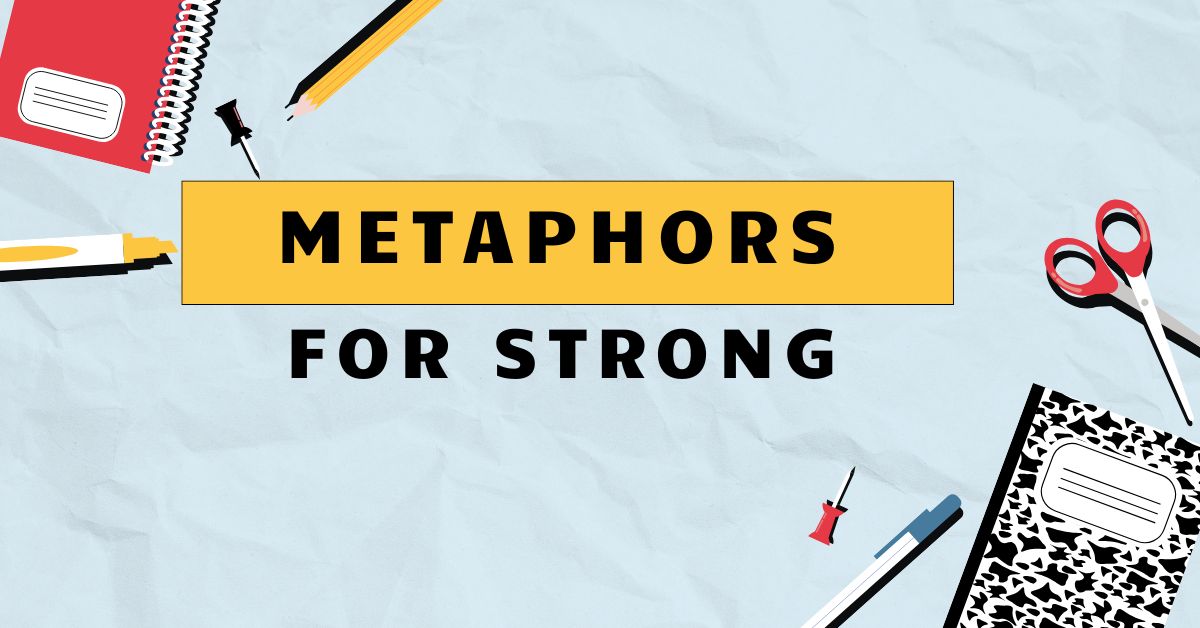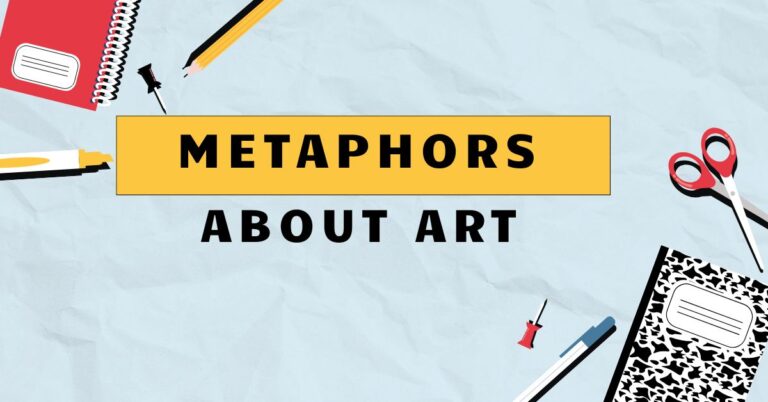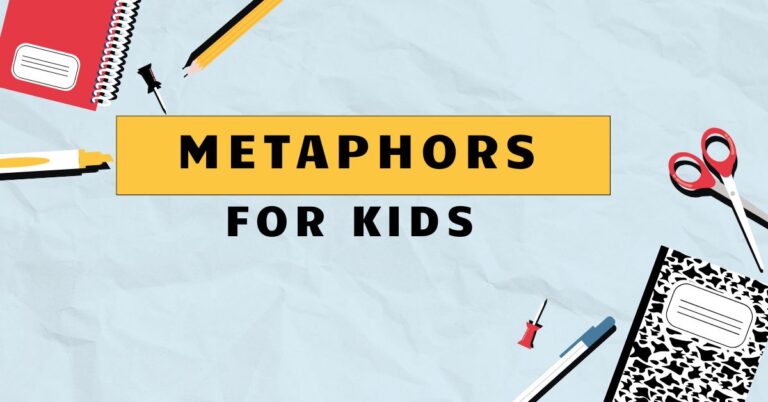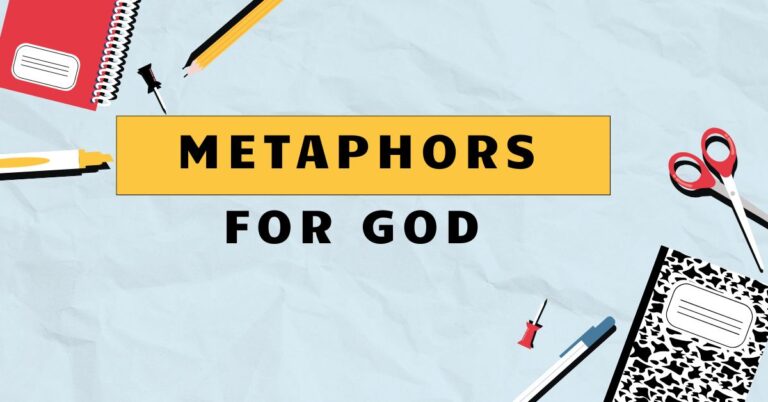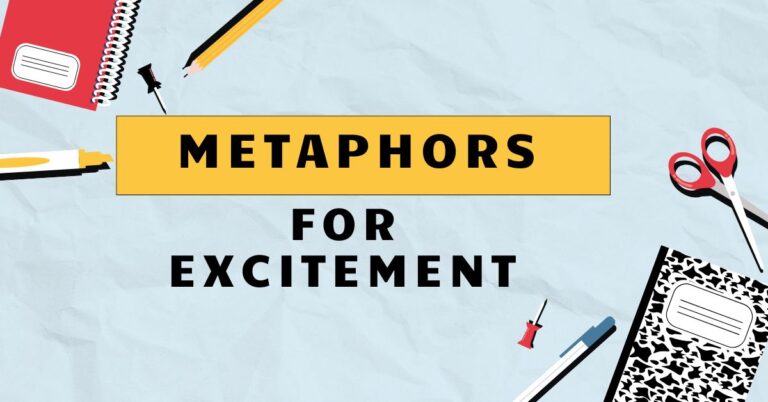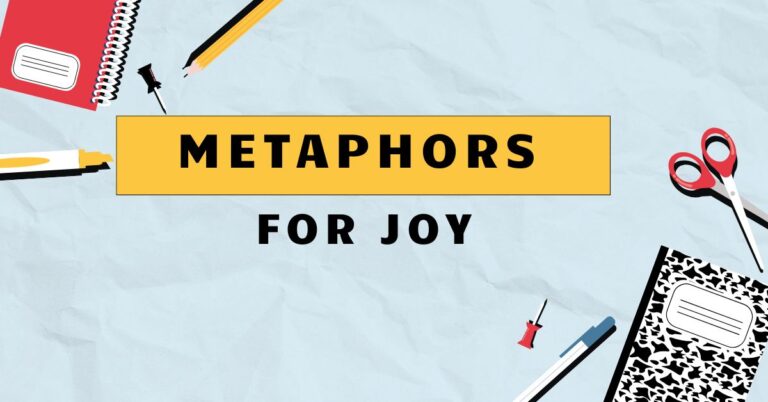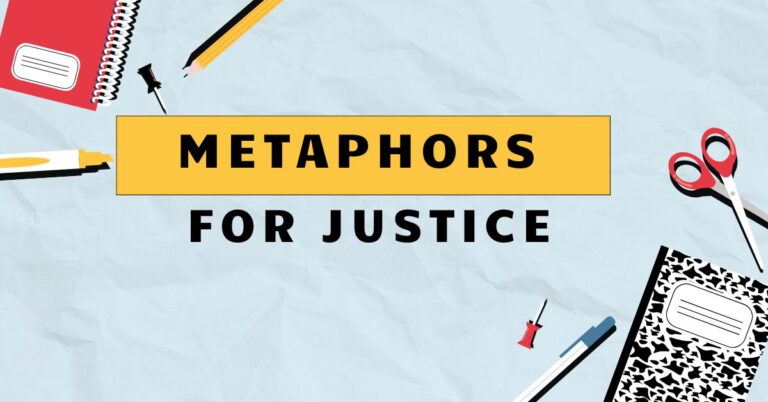43 Metaphors for Strong: Enhancing Your Descriptive Language
Understanding and using metaphors effectively is crucial for enriching your writing and speech. Metaphors allow you to convey abstract ideas and complex emotions in a vivid and relatable way.
When describing strength, metaphors can go beyond simple adjectives, adding depth and nuance to your descriptions. This article explores various metaphors for “strong,” their meanings, and how to use them effectively.
This comprehensive guide is perfect for students, writers, and anyone looking to improve their command of the English language and express themselves with greater precision and creativity.
By mastering these metaphorical expressions, you’ll be able to paint a more compelling picture for your audience, making your descriptions more engaging and memorable. Whether you’re crafting a character in a novel, writing a persuasive argument, or simply looking to enhance your everyday conversations, this guide will provide you with the tools you need.
Table of Contents
- Introduction
- Definition of Metaphor and Strength
- Structural Breakdown of Metaphors
- Types of Metaphors for Strong
- Examples of Metaphors for Strong
- Usage Rules for Metaphors
- Common Mistakes When Using Metaphors
- Practice Exercises
- Advanced Topics in Metaphor Usage
- Frequently Asked Questions
- Conclusion
Definition of Metaphor and Strength
Ametaphoris a figure of speech that directly compares two unrelated things, asserting that one thing *is* another, to create a vivid image or understanding. Unlike similes, which use “like” or “as” to make a comparison, metaphors imply a direct equivalence.
This implicit comparison allows for a deeper, more impactful connection between the two subjects. Metaphors add color and depth to language, making it more engaging and evocative.
Strength, in its most basic sense, refers to the quality of being physically powerful or resistant to force. However, the concept of strength extends beyond the physical realm.
It can also denote emotional resilience, mental fortitude, and strength of character. Each of these facets of strength can be effectively described using metaphors, painting a richer and more nuanced picture than literal language alone could achieve.
The power of a metaphor lies in its ability to transfer the qualities of one thing to another, allowing us to understand abstract concepts like strength in more concrete terms.
- Classification: Figure of speech
- Function: To create a vivid comparison, enhance understanding, and add depth to language.
- Contexts: Literature, poetry, everyday conversation, persuasive writing, and creative expression.
Structural Breakdown of Metaphors
A metaphor typically consists of two main elements: thetenorand thevehicle. The tenor is the subject being described, while the vehicle is the object or concept to which the subject is being compared.
The vehicle lends its qualities to the tenor, creating a more vivid and insightful understanding. The effectiveness of a metaphor depends on the relationship between the tenor and the vehicle and how well the shared qualities are highlighted.
For example, in the metaphor “He is a rock,” “he” is the tenor (the person being described), and “rock” is the vehicle (the object used for comparison). The metaphor suggests that the person possesses qualities associated with a rock, such as stability, resilience, and unwavering support.
Understanding this structural breakdown helps in both interpreting and creating effective metaphors.
The underlying principle isimplicit comparison. The strength of a metaphor emerges from the unstated similarities between the tenor and the vehicle.
The reader or listener must recognize these similarities and make the connection to fully grasp the metaphor’s meaning. A well-crafted metaphor resonates because it taps into shared cultural understandings and associations.
Consider the metaphor “Her voice was a soothing balm.” Here, “her voice” is the tenor, and “a soothing balm” is the vehicle. The metaphor implies that her voice has healing and comforting qualities, similar to the effect of a balm on a wound.
The listener understands that her voice is not literally a balm but possesses similar soothing properties.
Types of Metaphors for Strong
Metaphors for “strong” can be categorized based on the type of strength they represent. Understanding these categories helps in choosing the most appropriate and impactful metaphor for a given context.
Physical Strength Metaphors
These metaphors compare a person’s physical strength to powerful natural forces, animals, or objects known for their resilience and power. They often evoke images of raw power and unyielding force.
Emotional Strength Metaphors
Emotional strength metaphors describe a person’s ability to withstand emotional challenges, cope with adversity, and maintain composure in difficult situations. They often relate to resilience, inner fortitude, and unwavering spirit.
Mental Strength Metaphors
These metaphors focus on a person’s cognitive abilities, such as their intelligence, focus, and determination. They often compare mental strength to sharp objects, unwavering focus, or strategic prowess.
Strength of Character Metaphors
These metaphors describe a person’s moral fortitude, integrity, and unwavering commitment to their values. They often relate to virtues such as honesty, courage, and resilience in the face of temptation or adversity.
Strength of Objects Metaphors
These metaphors are used to describe the resilience or durability of inanimate objects. They often compare the object to naturally strong materials or structures that can withstand significant force or wear and tear.
Examples of Metaphors for Strong
The following sections provide extensive examples of metaphors for “strong,” categorized by the type of strength they represent. Each example is designed to illustrate the diverse ways in which metaphors can be used to convey the concept of strength in a vivid and engaging manner.
Physical Strength Examples
These examples illustrate how metaphors can be used to describe physical strength, evoking images of raw power and unyielding force. The table below provides a comprehensive list of such metaphors.
| Metaphor | Explanation |
|---|---|
| He is an oak. | Suggests strength, stability, and resilience, like a sturdy oak tree. |
| She is a bulldozer. | Implies immense power and the ability to overcome obstacles. |
| His muscles are steel cables. | Conveys the idea of strong, taut, and unbreakable muscles. |
| He is a lion on the field. | Suggests courage, dominance, and physical prowess. |
| She is a brick wall. | Implies being impenetrable and unyielding. |
| He’s a powerhouse. | Suggests a constant and immense source of energy and strength. |
| She’s a titan of industry. | Implies immense power and influence in a specific field. |
| His grip was a vise. | Conveys an unshakeable and powerful hold. |
| He’s a human tank. | Suggests invincibility and the ability to withstand heavy impact. |
| She’s a rock in a storm. | Implies unwavering stability and strength during chaos. |
| He is a mountain of a man. | Conveys an image of imposing size and strength. |
| She’s a force of nature. | Implies unstoppable power and influence. |
| He’s a gladiator in the arena of business. | Suggests fierce competitiveness and strength in a challenging environment. |
| Her punches were thunderbolts. | Conveys the idea of sudden, devastating power. |
| He’s an iron pillar. | Implies unwavering strength and durability. |
| She is a fortress. | Suggests invulnerability and the ability to withstand attacks. |
| He’s an atlas, carrying the weight of the world. | Implies immense strength and responsibility. |
| She’s a hurricane of energy. | Conveys a sense of overwhelming and unstoppable force. |
| He is a granite statue. | Suggests unyielding strength and permanence. |
| She is a steel magnolia. | Implies a combination of delicate beauty and inner strength. |
| He is a battleship. | Suggests immense size, power, and resilience. |
| She is a dynamo. | Implies a constant source of energy and strength. |
| He is a tower of strength. | Conveys an image of imposing height and unwavering support. |
Emotional Strength Examples
These examples illustrate how metaphors can be used to describe emotional strength, focusing on resilience, inner fortitude, and unwavering spirit. The table below provides a variety of metaphors to capture the essence of emotional resilience.
| Metaphor | Explanation |
|---|---|
| She is an anchor in the storm. | Suggests stability and support during difficult times. |
| He is a phoenix rising from the ashes. | Implies resilience and the ability to overcome adversity. |
| Her spirit is an unbreakable thread. | Conveys the idea of unwavering determination and resilience. |
| He is a lighthouse in the darkness. | Suggests guidance and hope in challenging situations. |
| She is a willow bending but never breaking. | Implies flexibility and resilience in the face of adversity. |
| He has a heart of steel. | Suggests emotional fortitude and resilience. |
| She is a soldier in the battle of life. | Implies courage and perseverance in the face of challenges. |
| He is a tree weathering the storm. | Conveys the idea of standing strong despite adversity. |
| She is a diamond, forged under pressure. | Suggests strength and beauty developed through hardship. |
| He is a fortress against despair. | Implies an ability to resist negative emotions and maintain hope. |
| She is a sunflower, always turning towards the light. | Suggests optimism and resilience in the face of adversity. |
| He is a bridge over troubled waters. | Implies providing support and guidance during difficult times. |
| She is a candle burning bright in the darkness. | Suggests hope and resilience in challenging situations. |
| He is a shield against negativity. | Implies an ability to protect oneself from harmful influences. |
| She is a spring, always bouncing back. | Conveys the idea of resilience and recovery after setbacks. |
| He is a rock of stability. | Suggests unwavering support and reliability. |
| She is a star shining through the clouds. | Implies hope and resilience in difficult times. |
| He is a sail navigating rough seas. | Suggests resilience and determination in the face of challenges. |
| She is a fire burning brightly despite the wind. | Conveys the idea of unwavering passion and determination. |
| He is a root, deeply grounded and resilient. | Implies stability and strength in the face of adversity. |
| She is a river, flowing strong despite the obstacles. | Suggests resilience and adaptability in challenging situations. |
| He is a mountain, unmoved by the storms. | Implies unwavering strength and resilience. |
| She is a seed, pushing through the earth. | Conveys the idea of resilience and growth in the face of adversity. |
Mental Strength Examples
These examples illustrate how metaphors can be used to describe mental strength, focusing on intelligence, focus, and determination. The table below provides a variety of metaphors to capture the essence of mental resilience.
| Metaphor | Explanation |
|---|---|
| His mind is a steel trap. | Suggests sharp intellect and an ability to retain information. |
| She is a chess master in negotiations. | Implies strategic thinking and skillful maneuvering. |
| His focus is a laser beam. | Conveys the idea of intense concentration and unwavering attention. |
| She is a computer processing information. | Suggests efficient and logical thinking. |
| His intellect is a sword, sharp and precise. | Implies powerful and incisive thinking. |
| She has a mind like a steel vault. | Suggests the ability to securely store and protect information. |
| He is a strategist on the battlefield of business. | Implies skillful planning and execution. |
| Her determination is an iron will. | Conveys unwavering resolve and commitment. |
| He is a think tank of ideas. | Suggests a constant source of innovative and insightful thoughts. |
| She is a detective piecing together clues. | Implies analytical skills and problem-solving abilities. |
| He is a scholar delving into knowledge. | Suggests a deep and comprehensive understanding of complex subjects. |
| She is a scientist experimenting with possibilities. | Implies a methodical and inquisitive approach to problem-solving. |
| His memory is an elephant, never forgetting. | Conveys the idea of exceptional recall and retention. |
| She is a puzzle solver tackling challenges. | Implies skillful problem-solving abilities and determination. |
| He is a navigator charting a course through complexity. | Suggests the ability to guide and direct through difficult situations. |
| She is a beacon of clarity in confusion. | Implies the ability to provide guidance and understanding. |
| He is a builder constructing innovative solutions. | Suggests creativity and the ability to develop new ideas. |
| She is a gardener cultivating ideas. | Implies nurturing and developing thoughts and concepts. |
| His logic is a razor, cutting through ambiguity. | Conveys the idea of precise and incisive reasoning. |
| She is a fortress of knowledge. | Implies a vast and comprehensive understanding of various subjects. |
| He is a mastermind orchestrating success. | Suggests strategic planning and skillful execution. |
| She is a pilot navigating through uncertainty. | Implies the ability to guide and direct through difficult situations. |
| He is a key unlocking possibilities. | Conveys the idea of opening doors and creating opportunities. |
Strength of Character Examples
These examples show how metaphors can emphasize moral fortitude, integrity, and unwavering values. The table provides metaphors that highlight virtues like honesty, courage, and resilience.
| Metaphor | Explanation |
|---|---|
| He is a moral compass, always pointing true north. | Indicates unwavering integrity and ethical guidance. |
| She is a beacon of hope in times of despair. | Suggests that she brings light and encouragement to others. |
| His word is his bond, unbreakable and true. | Implies utmost honesty and reliability. |
| She is a shield against corruption, protecting the innocent. | Conveys her role as a defender of justice and integrity. |
| He is a rock of integrity in a sea of deceit. | Implies steadfastness and honesty in challenging situations. |
| She’s a guardian angel, watching over those in need. | Suggests protection, care, and unwavering support. |
| He’s a lighthouse, guiding others through darkness. | Implies providing direction and hope in difficult times. |
| She’s a backbone of the community, always standing tall. | Conveys her indispensable role and unwavering support. |
| He’s a sword of truth, cutting through lies. | Implies a commitment to honesty and justice. |
| She’s a bridge connecting people of different backgrounds. | Suggests her role in fostering understanding and unity. |
| He’s a pillar of strength, supporting the vulnerable. | Implies unwavering support and reliability. |
| She’s a voice for the voiceless, championing the oppressed. | Conveys her advocacy for those who cannot speak for themselves. |
| He’s a seed of hope, planting the future. | Suggests his role in inspiring growth and positive change. |
| She’s a fire of compassion, warming the hearts of others. | Implies empathy and kindness towards those in need. |
| He’s a star guiding lost souls. | Suggests providing direction and hope to those who are struggling. |
| She’s a tree, providing shelter and support to all. | Implies unwavering support and nurturing presence. |
| He’s a river, flowing with justice and fairness. | Suggests a constant and unwavering commitment to ethical principles. |
| She’s a mountain, standing firm against injustice. | Implies unwavering strength and resilience in the face of adversity. |
| He’s a shield protecting against harm. | Conveys his role as a protector and defender. |
| She’s a key unlocking opportunities for others. | Implies her role in creating possibilities and empowering others. |
| He’s a garden, cultivating goodness and growth. | Suggests his role in nurturing positive qualities in others. |
| She’s a mirror reflecting truth and honesty. | Implies her commitment to transparency and authenticity. |
| He’s a song inspiring hope and resilience. | Suggests his ability to uplift and encourage others through his actions. |
Object Strength Examples
These metaphors describe the resilience or durability of inanimate objects, comparing them to strong materials or structures. The table provides examples of how objects can be metaphorically described as strong.
| Metaphor | Explanation |
|---|---|
| The building is a fortress, standing strong for centuries. | Indicates resilience and ability to withstand damage over time. |
| The bridge is a steel giant, connecting distant lands. | Suggests immense strength and durability. |
| The dam is a concrete wall, holding back the flood. | Implies unyielding strength and resistance to powerful forces. |
| The rope is an iron chain, unbreakable and secure. | Conveys the idea of immense strength and reliability. |
| The foundation is a rock, supporting the entire structure. | Implies unwavering stability and support. |
| The car is a tank, plowing through any terrain. | Suggests invincibility and the ability to overcome obstacles. |
| The door is a shield, protecting against intruders. | Implies protection and security. |
| The safe is a vault, safeguarding valuables. | Conveys the idea of impenetrable security. |
| The armor is a steel shell, deflecting attacks. | Implies invulnerability and protection. |
| The tool is a workhorse, always reliable and strong. | Suggests dependability and strength in performing tasks. |
| The fabric is a woven fortress, resistant to wear. | Implies durability and resistance to damage. |
| The machine is a powerhouse, driving the operation. | Suggests constant and immense source of energy and strength. |
| The cable is a steel tendon, holding everything together. | Implies strength and the ability to withstand heavy loads. |
| The lock is a guardian, ensuring security. | Conveys the idea of protection and vigilance. |
| The frame is a skeleton, supporting the structure. | Implies essential support and stability. |
| The container is a strongbox, safeguarding treasures. | Suggests protection and security for valuable items. |
| The wall is a barrier, preventing passage. | Implies unyielding resistance and obstruction. |
| The shield is a fortification, deflecting blows. | Conveys the idea of protection and defense. |
| The anchor is a weight, providing stability. | Implies unwavering support and reliability. |
| The chain is a bond, linking everything together. | Suggests strength and connection. |
| The beam is a spine, supporting the roof. | Implies essential support and stability for the structure. |
| The armor is a second skin, protecting the wearer. | Conveys the idea of personal protection and resilience. |
| The material is a diamond, resistant to scratches. | Suggests exceptional durability and resistance to damage. |
Usage Rules for Metaphors
Using metaphors effectively requires a keen sense of language and an understanding of the context in which they are used. While metaphors can greatly enhance writing, improper usage can lead to confusion or misinterpretation.
Here are some key rules to keep in mind:
- Ensure Clarity: The metaphor should be easily understood by the audience. The connection between the tenor and the vehicle should be apparent. Overly obscure or abstract metaphors can confuse the reader.
- Maintain Consistency: Avoid mixing metaphors, which can create a nonsensical or jarring effect. For example, “He grasped the bull by the horns and sailed smoothly through the storm” combines two unrelated images and lacks coherence. Instead, stick to a single, consistent image.
- Avoid Clichés: Overused metaphors, such as “He is as strong as an ox,” have lost their impact and freshness. Strive to create original and imaginative metaphors that capture the essence of strength in a unique way.
- Consider the Audience: Tailor your metaphors to the knowledge and understanding of your audience. A metaphor that resonates with one audience may not be effective with another.
- Use Sparingly: While metaphors can add depth and color to your writing, overuse can become overwhelming. Use them judiciously to highlight key points and enhance the overall impact of your message.
- Ensure Relevance: The metaphor should be relevant to the subject matter and the overall tone of the writing. An inappropriate metaphor can detract from the message and undermine the credibility of the writer.
- Be Aware of Cultural Context: Some metaphors may have different meanings or connotations in different cultures. Be mindful of these cultural nuances to avoid unintentional offense or misinterpretation.
Common Mistakes When Using Metaphors
Even experienced writers can make mistakes when using metaphors. Recognizing these common errors can help you avoid them and improve the effectiveness of your writing.
- Mixed Metaphors: Combining unrelated images, creating confusion.
- Incorrect: “He was burning the candle at both ends while climbing the ladder of success.”
- Correct: “He was burning the candle at both ends.” or “He was climbing the ladder of success.”
- Clichés: Using overused and unoriginal metaphors.
- Incorrect: “He is as strong as an ox.”
- Correct: “He is a fortress, unyielding against any pressure.”
- Obscure Metaphors: Creating metaphors that are difficult to understand.
- Incorrect: “His strength was a fractal equation of the universe.”
- Correct: “His strength was a deep-rooted oak, unshaken by any wind.”
- Inappropriate Tone: Using metaphors that don’t suit the context.
- Incorrect: “The funeral was a real party pooper.” (Using a casual metaphor in a serious context)
- Correct: “The funeral cast a long shadow over the family.”
- Overuse: Using too many metaphors in a short space.
- Incorrect: “He was a lion, a rock, a powerhouse, a titan, all rolled into one incredibly strong person.”
- Correct: “He was a titan, an incredibly strong person.”
Practice Exercises
Test your understanding of metaphors for “strong” with these exercises. Identify the best metaphor to complete each sentence or rewrite sentences to include a suitable metaphor.
| Question | Answer |
|---|---|
| 1. After overcoming numerous obstacles, her determination was like a __________. | 1. Her determination was like a steel cable. |
| 2. His resilience in the face of adversity made him a true __________. | 2. His resilience in the face of adversity made him a true phoenix. |
| 3. The building stood as a __________, weathering every storm. | 3. The building stood as a fortress, weathering every storm. |
| 4. She approached the challenge with the focus of a __________. | 4. She approached the challenge with the focus of a laser beam. |
| 5. His moral compass made him a __________ in a world of deception. | 5. His moral compass made him a beacon in a world of deception. |
| 6. The athlete’s muscles were like __________, powering through the competition. | 6. The athlete’s muscles were like engines, powering through the competition. |
| 7. The leader’s calm demeanor was a __________ for the team during the crisis. | 7. The leader’s calm demeanor was a rock for the team during the crisis. |
| 8. The lawyer’s arguments were as sharp as a __________, cutting through the opposition’s case. | 8. The lawyer’s arguments were as sharp as a sword, cutting through the opposition’s case. |
| 9. The organization became a __________ in the community, providing essential services. | 9. The organization became a pillar in the community, providing essential services. |
| 10. His unwavering support made him an __________ to his friends and family. | 10. His unwavering support made him an anchor to his friends and family. |
| 11. The old tree stood as a __________, a testament to enduring strength. | 11. The old tree stood as a giant, a testament to enduring strength. |
| 12. Her determination was like a __________, pushing through every obstacle in her path. | 12. Her determination was like a bulldozer, pushing through every obstacle in her path. |
Advanced Topics in Metaphor Usage
For advanced learners, exploring the nuances of extended metaphors and understanding the cultural implications of metaphorical language can further enhance their command of the English language. Anextended metaphor, also known as a conceit, is a metaphor that is developed over several lines or paragraphs, creating a more complex and nuanced comparison.
This technique is often used in poetry and literature to create a deeper and more lasting impression.
Understanding thecultural implicationsof metaphors is also crucial. Metaphors are often rooted in cultural experiences and beliefs, and their meaning can vary depending on the cultural context.
Being aware of these cultural nuances can help you avoid misinterpretations and use metaphors more effectively in cross-cultural communication. For instance, the metaphor of a “lion” as a symbol of strength may resonate differently in cultures where lions are not native or hold different symbolic meanings.
Analyzing the works of renowned authors and poets can provide valuable insights into the effective use of metaphors. Studying how these writers craft and develop their metaphors can inspire you to create more imaginative and impactful comparisons in your own writing.
Pay attention to the context in which metaphors are used, the specific qualities that are being highlighted, and the overall effect that the metaphors create.
Another advanced technique is the use ofmixed metaphors for effect. While generally discouraged, skilled writers sometimes intentionally mix metaphors to create a jarring or humorous effect.
This technique requires a deep understanding of language and a careful consideration
of the intended audience and purpose.
Frequently Asked Questions
Conclusion
Metaphors are powerful tools for enhancing your descriptive language and conveying abstract concepts like strength in a vivid and engaging manner. By understanding the structural breakdown of metaphors, exploring different types of metaphors for “strong,” and following the usage rules outlined in this guide, you can effectively use metaphors to enrich your writing and speech.
Avoid common mistakes, practice regularly, and continue to explore advanced topics in metaphor usage to master this essential skill. With practice and attention to detail, you can harness the power of metaphors to create compelling and memorable descriptions that resonate with your audience.

